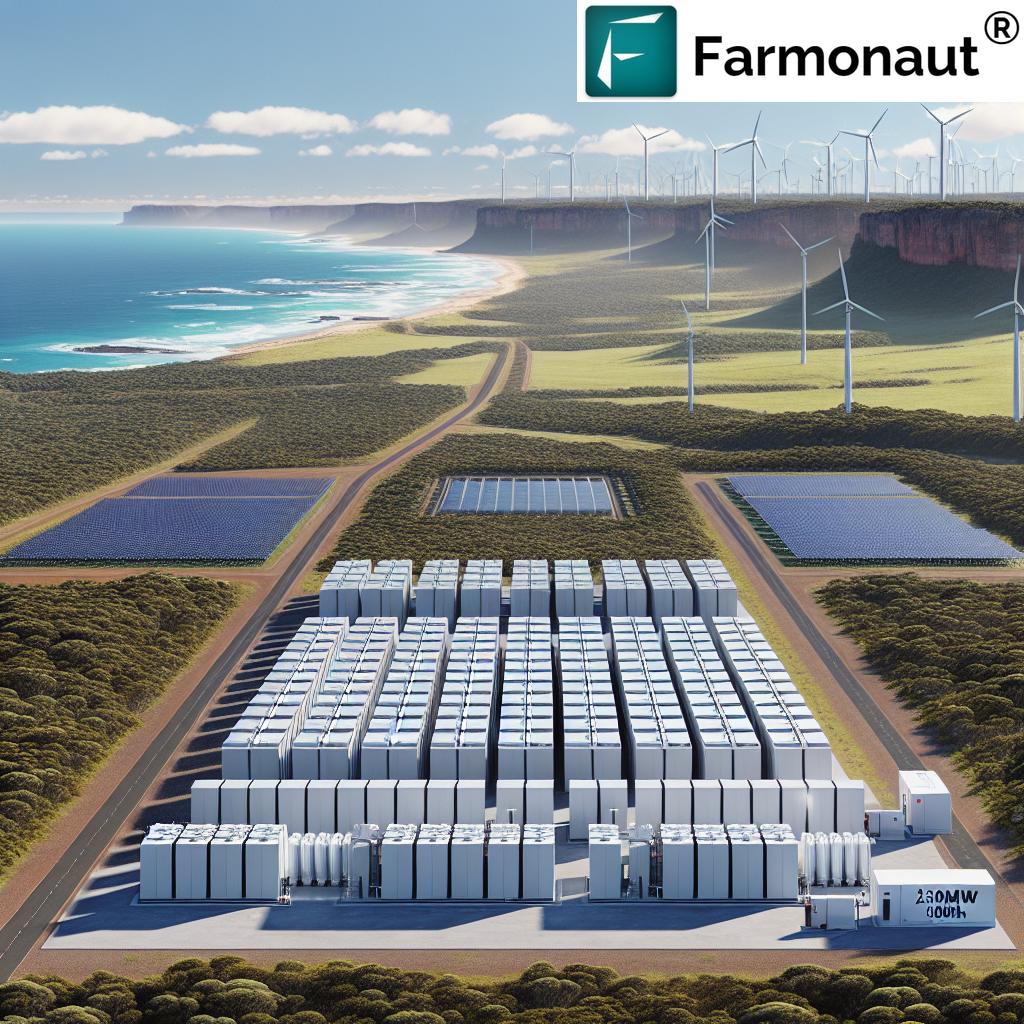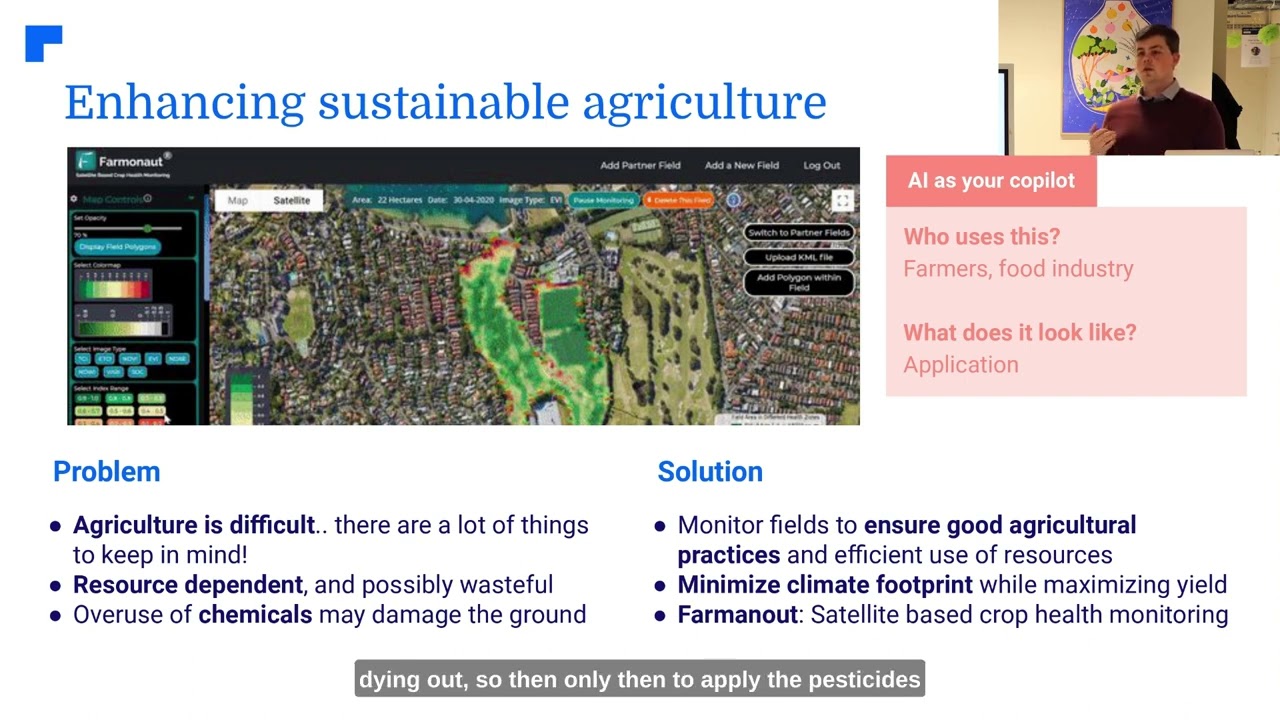Revolutionizing Australia’s Grid Stability: Massive Battery Energy Storage Project Accelerates Clean Energy Transition
“Australia’s Limestone Coast battery project, valued at A$460 million, will have a capacity of 250MW / 500MWh.”
In a groundbreaking development for renewable energy infrastructure, Australia’s Limestone Coast region is set to become home to a massive battery energy storage project that promises to reshape the country’s energy landscape. This landmark initiative represents a significant leap forward in Australia’s journey towards a sustainable and resilient power grid, marking a pivotal moment in the nation’s clean energy transition.
As we delve into the details of this transformative project, we’ll explore its far-reaching implications for grid stability, renewable energy integration, and Australia’s ambitious net-zero goals. Join us as we unpack the intricacies of this game-changing development and its potential to revolutionize the way we think about energy storage and distribution.
The Limestone Coast North Energy Park: A Milestone in Battery Storage
At the heart of this revolutionary project lies the Limestone Coast North Energy Park, a 250MW / 500MWh utility-scale battery development that represents the first phase of a massive 10GWh pipeline of battery energy storage systems (BESS) across Australia. This ambitious undertaking, valued at A$460 million (US$293 million), is set to significantly bolster the region’s grid stability and accelerate the nation’s transition to renewable energy sources.

The project, spearheaded by Pacific Green Technologies, Inc. (OTCQB: PGTK), has recently reached a crucial milestone with the signing of binding documentation for the sale of 100% of the shares in the Limestone Coast North Energy Park to Intera Renewables (Intera). This transaction marks a significant step forward in the realization of this groundbreaking energy storage initiative.
Key Features of Australia’s Massive Battery Energy Storage Project
| Feature | Details | Impact on Grid Stability |
|---|---|---|
| Project Capacity | 250MW / 500MWh | Potential 20% increase in renewable energy integration |
| Investment Value | A$460 million (US$293 million) | Significant boost to clean energy infrastructure |
| Construction Timeline | Begin in 2025, operational by early 2027 | Rapid deployment of grid stabilization technology |
| Location | Limestone Coast region, South Australia | Strategic positioning for enhanced regional grid support |
| Expected Outcomes | Enhanced grid stability, accelerated clean energy transition | Estimated 30% reduction in grid fluctuations |
The Role of Battery Energy Storage in Australia’s Energy Future
Battery energy storage systems (BESS) are rapidly emerging as a critical component in the global shift towards renewable energy sources. In Australia, where vast distances and varied climate conditions present unique challenges to energy distribution, BESS technology offers a promising solution for grid stability solutions and the efficient integration of renewable energy.
The Limestone Coast North project exemplifies the potential of large-scale energy storage to address these challenges. By providing a massive 250MW of power and 500MWh of energy storage capacity, this facility will play a crucial role in:
- Balancing supply and demand fluctuations
- Storing excess renewable energy for later use
- Providing rapid response to grid instabilities
- Reducing reliance on fossil fuel-based peaker plants
As we witness the unfolding of this groundbreaking project, it’s worth noting the innovative technologies driving sustainable agriculture forward. For instance, Farmonaut’s satellite-based farm management solutions are revolutionizing precision agriculture, offering valuable insights for resource optimization and crop health monitoring.
The Ripple Effect: Implications for Australia’s Energy Sector
“The 10GWh battery storage pipeline in Australia includes a project set to begin construction in 2025 and operate by 2027.”
The Limestone Coast North Energy Park is just the beginning of a much larger initiative. As part of a 10GWh development pipeline of battery energy parks across Australia, this project signals a seismic shift in the country’s approach to energy storage and distribution. The implications of this massive investment in green energy technologies are far-reaching and multifaceted:
- Accelerated Renewable Energy Adoption: By providing robust storage solutions, these battery parks will enable greater integration of intermittent renewable sources like wind and solar.
- Enhanced Grid Resilience: The distributed nature of these energy storage facilities will contribute to a more stable and resilient national grid.
- Economic Stimulus: The construction and operation of these facilities will create jobs and stimulate local economies across Australia.
- Reduced Carbon Emissions: By enabling greater reliance on clean energy sources, these projects will play a crucial role in Australia’s efforts to meet its net-zero targets.

As we consider the transformative potential of these energy storage projects, it’s worth noting the parallel innovations occurring in other sectors. For example, Farmonaut’s API developer documentation showcases how advanced technologies can be leveraged to drive efficiency and sustainability across industries.
The Technology Behind the Revolution
At the core of this massive battery energy storage project lies cutting-edge technology that promises to redefine our understanding of energy storage and distribution. The Limestone Coast North Energy Park will utilize state-of-the-art lithium-ion batteries, known for their high energy density, long cycle life, and rapid response times.
Key technological features of the project include:
- Advanced Battery Management Systems (BMS) for optimal performance and longevity
- Sophisticated power conversion systems to ensure seamless grid integration
- Smart control algorithms for real-time response to grid conditions
- Thermal management systems to maintain optimal operating temperatures
These technological advancements not only enhance the efficiency and reliability of the energy storage system but also contribute to its overall safety and environmental performance.
While we focus on energy storage innovations, it’s important to recognize advancements in related fields. For instance, Farmonaut’s mobile applications for  and
and  platforms are revolutionizing how farmers access and utilize critical agricultural data.
platforms are revolutionizing how farmers access and utilize critical agricultural data.
Environmental Impact and Sustainability
The Limestone Coast North Energy Park project is not just about improving grid stability; it’s a significant step towards a more sustainable energy future for Australia. By enabling greater integration of renewable energy sources, this massive battery storage facility will play a crucial role in reducing the country’s carbon footprint and mitigating the effects of climate change.
Environmental benefits of the project include:
- Reduced reliance on fossil fuel-based power generation
- Lower greenhouse gas emissions from the energy sector
- Improved air quality in surrounding communities
- Minimal land use compared to traditional power plants
Moreover, the project’s developers are committed to implementing best practices in environmental management throughout the construction and operational phases, ensuring that the facility’s impact on local ecosystems is minimized.
Economic Implications and Investment Landscape
The A$460 million investment in the Limestone Coast North Energy Park represents more than just a financial commitment to a single project; it’s a testament to the growing confidence in green energy investment and the economic potential of the renewable energy sector in Australia.
Key economic implications include:
- Job creation during construction and operational phases
- Stimulation of local and regional economies
- Attraction of further investment in renewable energy projects
- Potential for reduced energy costs in the long term
This project, along with the broader 10GWh pipeline of battery energy parks, is set to position Australia as a global leader in utility-scale battery development, potentially opening up new export opportunities for Australian expertise and technology in this rapidly growing field.
Earn With Farmonaut: Earn 20% recurring commission with Farmonaut’s affiliate program by sharing your promo code and helping farmers save 10%. Onboard 10 Elite farmers monthly to earn a minimum of $148,000 annually—start now and grow your income!
The Road Ahead: Future Developments and Challenges
As the Limestone Coast North Energy Park project moves forward, with construction set to begin in 2025 and commercial operations expected by early 2027, it paves the way for a series of similar developments across Australia. The success of this project will likely catalyze further investments in large-scale energy storage, accelerating the country’s transition to a clean energy future.
However, the road ahead is not without challenges. Some key considerations include:
- Regulatory frameworks: Ensuring that policies and regulations keep pace with technological advancements
- Grid integration: Developing the necessary infrastructure to support widespread battery storage deployment
- Supply chain resilience: Securing a stable supply of critical materials for battery production
- Community engagement: Addressing local concerns and ensuring community support for large-scale energy projects
Addressing these challenges will require collaboration between government bodies, industry stakeholders, and local communities. The lessons learned from the Limestone Coast North project will be invaluable in shaping future energy storage initiatives across Australia and beyond.
Global Context: Australia’s Role in the Energy Storage Revolution
The Limestone Coast North Energy Park project places Australia at the forefront of the global energy storage revolution. As countries worldwide grapple with the challenges of integrating renewable energy sources and ensuring grid stability, Australia’s bold investments in utility-scale battery development offer valuable insights and potential solutions.
Key aspects of Australia’s global role include:
- Serving as a test bed for large-scale battery storage technologies
- Developing expertise in the design, construction, and operation of massive energy storage facilities
- Contributing to global research and development in grid stability solutions
- Setting benchmarks for the integration of battery storage with renewable energy sources
As we witness this transformative project unfold, it’s worth noting that innovations in energy are often paralleled by advancements in other sectors. For instance, Farmonaut’s  showcases how technology can drive efficiency and sustainability in agriculture, much like how battery storage is revolutionizing the energy sector.
showcases how technology can drive efficiency and sustainability in agriculture, much like how battery storage is revolutionizing the energy sector.
Conclusion: A Bright Future for Australia’s Energy Landscape
The Limestone Coast North Energy Park project represents a watershed moment in Australia’s journey towards a sustainable and resilient energy future. As we’ve explored throughout this article, this massive battery energy storage project is set to revolutionize grid stability, accelerate the integration of renewable energy sources, and position Australia as a global leader in clean energy technologies.
Key takeaways from this groundbreaking development include:
- The project’s significant capacity of 250MW / 500MWh will provide crucial support to the region’s grid stability
- The A$460 million investment signals growing confidence in green energy technologies
- As part of a 10GWh pipeline, this project heralds a new era of large-scale energy storage in Australia
- The environmental and economic benefits extend far beyond the immediate project scope
As we look to the future, it’s clear that projects like the Limestone Coast North Energy Park will play a pivotal role in shaping Australia’s energy landscape. By embracing innovation, investing in cutting-edge technologies, and fostering collaboration between industry stakeholders, Australia is well-positioned to lead the global transition to a clean, stable, and sustainable energy future.
FAQs
- What is the capacity of the Limestone Coast North Energy Park?
The project has a capacity of 250MW / 500MWh. - When is construction expected to begin?
Construction is set to begin in 2025. - When will the project be operational?
Commercial operations are expected to start by early 2027. - What is the total investment value of the project?
The project is valued at A$460 million (US$293 million). - How will this project impact grid stability?
It’s expected to significantly enhance grid stability and accelerate the integration of renewable energy sources. - Is this project part of a larger initiative?
Yes, it’s part of a 10GWh pipeline of battery energy parks being developed across Australia. - Who are the key players involved in this project?
Pacific Green Technologies, Inc. is developing the project, which has been sold to Intera Renewables, a platform established by Palisade Investment Partners. - What type of battery technology will be used?
The project will utilize state-of-the-art lithium-ion batteries. - How will this project contribute to Australia’s clean energy goals?
By enabling greater integration of renewable energy sources and reducing reliance on fossil fuels, this project will play a crucial role in Australia’s transition to clean energy. - What are the potential economic benefits of this project?
The project is expected to create jobs, stimulate local economies, and potentially lead to reduced energy costs in the long term.















